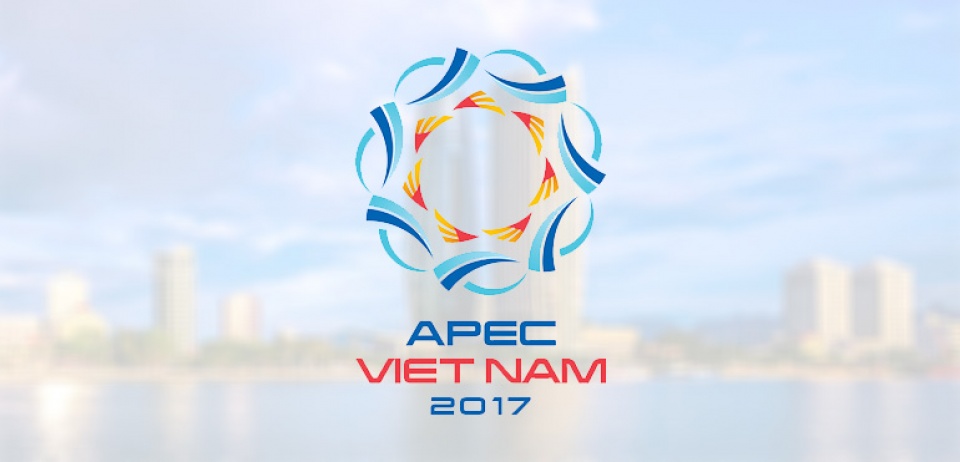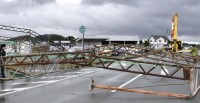
APEC on Target to Meet Sustainable Energy Commitments
Latest
| TIN LIÊN QUAN | |
| APEC-G20 Align Trade and Growth Priorities | |
| Da Nang gears up for APEC 2017 | |
Dr. Chern, who is also Chief of Energy Affairs at Chinese Taipei’s Energy Bureau, described APEC’s take on fossil fuel dependence, the evolution of energy sources and technologies, and the implications for people’s lives and livelihoods. He went on to discuss the fate of APEC’s ambitious commitments on renewable energy and energy efficiency, against the backdrop of global efforts to fight climate change.
 |
| Energy security is very important and continues to be a focus of cooperation for APEC members. (Photo: vietnamnet.vn) |
What is the state of energy supply and demand in the APEC region?
We produce more than 12,000 Terawatt hours of electricity annually in APEC. But over the past few years, there has been a gap in energy supply and demand, and this gap is growing. Currently, it is around ten per cent. We predict the gap will get larger and larger year after year. In this sense, energy security is very important and continues to be a focus of cooperation for APEC members.
At the same time, there is a need to establish a smooth transition to better, more sustainable energy supplies in the region. Many APEC members still rely on coal and are working on the cleaner use of fossil fuels. Of course, we all want to provide our energy in an environmentally-friendly way. In this regard, building renewable energy and energy efficiency are top priorities in APEC.
How is APEC’s work to strengthen energy security in the region evolving?
In the past, many separate renewable energy and energy efficiency technologies were proposed. Now we see that community-level integration of them is key to realizing a better world. In APEC, we are taking forward an Energy Smart Communities Initiative to support this effort. Under the initiative, we have a lot of activities, including city design and a knowledge-sharing platform.
Another challenge is that there are still pockets of the region that lack a modern energy supply. Without it, local people are deprived of good health, education and job opportunities. For these reasons, we have decided to expand our agenda in APEC to improve energy access in low income areas and will work together, including with our 2018 host Papua New Guinea which is championing this issue, to form solid conclusions and recommendations for our Leaders to provide help.
How is APEC reconciling the advancement of renewable energy and energy efficiency with the use of fossil fuels?
APEC Leaders have set very ambitious goals. For energy efficiency, we are pursuing an aggregate reduction of energy intensity of at least 45 per cent by 2035. For renewable energy, we seek to double its contribution to the region’s energy mix by 2030. We are working hard to achieve these targets. To coordinate our efforts, we set two roadmaps: one roadmap for energy efficiency and another roadmap for energy intensity. Based on these roadmaps, we realize we could achieve our energy objectives in due time.
On the use of fossil fuels, we have a standing point that APEC will not encourage further use of fossil fuels but we also will not discourage their use. We know that fossil fuels will be the reality for the near future. To reduce the negative impact of using fossil fuels, we are promoting cleaner technology. We are also working to reduce inefficient fossil fuel subsidies that encourage waste. These efforts can help to protect the environment and save money that can be used to support renewable energy and energy efficiency.
What is the potential impact of energy cooperation in APEC on trade and growth as well as for consumers in the region and their everyday lives?
In APEC, we have large energy producers, and we also have large energy consumers. We also have member economies that completely rely on energy imports. Therefore, energy trade – both in the APEC region and outside it – is very important to us. We continue to work on various projects on energy trade and investment, and we are driving reforms to reduce unnecessary barriers on the trade of cleaner energy.
In recent years, we have promoted the trade of natural gas. We have also promoted trade in energy efficient and renewable technologies. In APEC, we have an environmental goods list, for example. Goods on the list have enjoyed tariff reductions. Members agreed to reduce their tariffs on them to five per cent or less. And further efforts are ongoing. All of this benefits APEC member economies and also all the people within the APEC region by helping to make cleaner, efficient energy more accessible.
To what extent are governments, businesses and the public in the region embracing new policies and approaches for improving energy development and energy use?
In the past, many efforts were only focused on central governments. However, to promote renewable energy and energy efficiency, cooperation from communities and local governments is key.
For the past six years, we have promoted the APEC Energy Smart Communities Initiative and information-sharing, technology building and expertise exchanges under it. Each year we also have a recognition program as part of the initiative that spotlights outstanding projects in the field. We do see a lot of participants from the grassroots, from local governments. They benefit a lot from this interaction. This is very important, and we are actively working to attract more grassroots entities and local governments to join.
What is the progress of the APEC Low Carbon Model Town initiative?
Low Carbon Model Towns are a sub-branch of the APEC Energy Smart Communities Initiative. Every year, we choose a city or community in the region and offer expertise to urban planners on how to integrate renewable energy and energy efficiency into their designs. The aim is to help them introduce new technologies and concepts from the design stage. To date, we have chosen seven cities and all have accepted our recommendations. This activity will continue.
What is your view of the results so far, in terms of the grassroots implementation of APEC’s recommendations on renewable energy and energy efficiency?
We spend more or less USD 700,000 on the APEC Low Carbon Model Town project annually. This is not a big amount but based on our experience over the past seven years, it is roughly right and has delivered a favorable return on investment.
All low carbon model towns have shown a very positive response. Last year, APEC Leaders met in Lima, Peru which is actually the location of a low carbon model town – San Borja – designed with the help of the APEC Energy Working Group. This year, our Leaders will meet in Da Nang, Viet Nam which is another low carbon model town. This is a good demonstration of how the initiative is fairing.
How prepared are labor forces in the Asia-Pacific to support and benefit from modernization in the energy sector, and what is APEC doing to address training and skills gaps?
There are several facts we must consider. First, there are aging problems in developed economies in the region. There are also many young people in developing APEC economies. Each of these groups – including older, more experienced workers and those just starting out – may not have skills compatible with the latest energy technologies. Therefore, knowledge-sharing, especially at the grassroots level, is critical.
There is lots of valuable information available right now on the APEC Energy Smart Communities Initiative’s knowledge-sharing platform that can be used to address this challenge at the local level. We also have expert groups on energy efficiency and renewable energy that hold lots of activities in APEC economies. They help to attract local attention and educate the public.
We have another task force on energy resilience. One of the key decisions that we made recently is to focus on workforce resilience. As part of this effort, we have begun taking steps to support human resource development within the sector, in collaboration with the private sector. This includes strengthening public outreach, skills training and incentives to lower recruitment and retention barriers. We are also addressing areas like disaster preparedness and recovery to ensure operational continuity.
What more can APEC do to lift barriers to growth and sustainability in the energy sector?
To lift the barriers to growth and sustainability in the energy sector, we need to consider what they are. The first barrier is that we don’t have adequate technology to support our people. The second barrier is we don’t have adequate investment to deploy all the technology that we need. This second barrier is also connected to the third barrier—that is, the energy poverty of many remote regions. They still don’t have adequate access to finance or modern energy supplies.
As we work on energy efficiency, renewable energy, cleaner use of fossil energy in APEC, we disseminate the best and newest technological information between our member economies to remove the first barrier. For the second barrier, on financing, we have put a Green Energy Financing initiative in place. Through it, we are seeking to encourage international financial institutions, bankers and developers to pool their money into this region. For the third issue, on poverty, we have just agreed to work on improving energy access. We will form new policy directions to help address this on-going challenge.
What would you like to see APEC accomplish in 2017 and over the next few years when it comes to the region’s energy priorities?
I have great confidence in our APEC member economies based on their record of achievement in advancing the region’s energy goals. This year we have a very full work agenda. It’s very difficult to do everything that we set out to do in such a short time. But I appreciate the contribution from each of our members and can assure you that we are dedicated to our Leaders’ instructions and will continue to actively implement them. We are doing our best to make everything happen in a very efficient way.
Is APEC on track to meet its two signature targets on increasing renewable energy use and reducing energy intensity?
Dr Chern: We formed our roadmap for energy intensity reduction seven years ago and we check our progress every year. At this moment, I can very proudly say that we could achieve a 43 per cent reduction by 2035. This is only two per cent less than our Leaders’ instruction. We are very confident, due to our efforts, that we can find a way to bridge the gap.
For the renewable energy doubling goal, we just formed our roadmap for meeting it. According to our initial finding, we need a six per cent increase in investment compared to business as usual to make everything happen. We are working on new actions to fill in the gap. As the chair of the Energy Working Group, I have very high confidence in my members. We can meet these two goals on-time.
 | TPP negotiation continued without US The chief negotiators from the 11 Trans-Pacific Partnership countries met in Hakone, Kanagawa Prefecture, southwest of Tokyo, on July 12 to discuss how to bring ... |
 | APEC Enhances Disaster Resilient Trade A string of costly earthquakes and extreme weather has prompted new action in APEC to enhance economic security. Therefore, on July 7 in Nagoya (Japan), ... |
 | Korea Joins APEC Data Privacy Program Korea has become the latest member of the APEC Cross-Border Privacy Rules System, strengthening the growth potential of the e-commerce sector and protection of the rapidly ... |

















